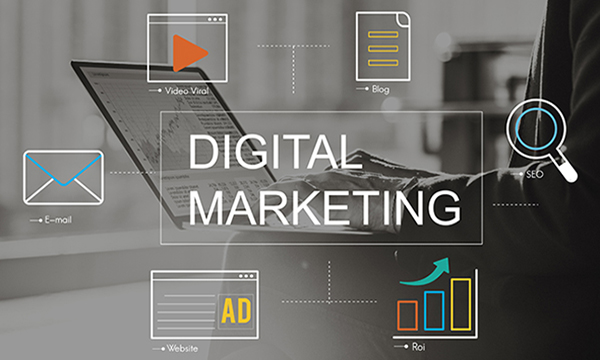Social Media Ads
Blog Category pages subscription form.

What are Social Media Ads?
Connecting with Audiences on Their Favorite Platforms
Social media ads are paid advertisements displayed on platforms like Facebook, Instagram, Twitter, LinkedIn, and TikTok. These ads use visual content, such as images, videos, and carousels, to capture users’ attention as they scroll through their feeds. With advanced targeting options, businesses can reach specific audiences based on interests, behaviors, demographics, and more. Social media ads are a powerful tool for building brand awareness, generating leads, and driving traffic.

Tracing the Roots
The Historical Journey of Social Media Ads
Social media advertising began with platforms like MySpace and Facebook, which first allowed brands to create pages and engage with users. As social media grew in popularity, platforms like Facebook launched paid advertising options, enabling businesses to reach users more effectively. Today, social media ads have become an essential part of digital marketing, with advanced targeting options and creative formats, allowing businesses to reach billions of users worldwide across various platforms.
Benefits and Drawbacks of Effective Social Media Ads
Pros
- Precise Targeting: Social media platforms offer advanced targeting options, allowing advertisers to reach specific audiences based on interests, demographics, and behaviors.
- Engaging Visual Formats: Social media ads leverage visuals, videos, stories, and interactive features to engage users within their feeds.
- High Reach: With billions of active users, social media platforms provide an opportunity to reach a wide and diverse audience.
- Cost-Effective Advertising: Social media ads can be run on small budgets, making them accessible for businesses of all sizes.
- Real-Time Engagement: Social media ads allow for direct interaction with users through comments, likes, and shares, fostering engagement.
Cons
- Ad Fatigue: Users may become tired of seeing ads on their social media feeds, leading to lower engagement over time.
- Short Attention Span: Ads need to be highly engaging to capture users’ attention quickly as they scroll through their feeds.
- Platform Algorithm Changes: Social media platforms frequently update their algorithms, which can impact ad performance.
- Competitor Saturation: Popular platforms like Facebook and Instagram are crowded with ads, making it challenging to stand out.
- Complex Setup: Creating effective social media ads requires knowledge of the platform’s advertising tools and audience preferences.
10 FAQs about Social Media Ads
What are social media ads?
Why are social media ads important for businesses?
How do I create a social media ad campaign?
What is Facebook Ads Manager?
How do I measure the success of my social media ads?
What is a lookalike audience?
How do I optimize my social media ads?
What is the difference between organic and paid social media?
How do video ads perform on social media?
What are common mistakes to avoid in social media advertising?
Contact Us
Glossary of Social Media Ads Terms
Social Media Ads:
Paid advertisements that appear on social media platforms target users based on their interests, behaviors, and demographics.
Facebook Ads Manager:
A tool used to create, manage, and analyze ad campaigns on Facebook and Instagram.
Engagement Rate:
The percentage of users who interact with a social media ad through likes, comments, shares, or clicks.
Lookalike Audience:
A custom audience that shares characteristics with your existing customer base, helping to reach new potential customers.
A/B Testing:
Comparing two ad versions to determine which one performs best, enabling optimization based on the results.
Cost Per Click (CPC):
The amount paid each time a user clicks on a social media ad.
Conversion Rate:
The percentage of users who take a desired action, such as signing up or making a purchase, after clicking on an ad.
Impressions:
The total count of times a social media ad is shown to users, regardless of any engagement.
Ad Creative:
The visual elements and copy used in a social media ad include images, videos, headlines, and descriptions.
Click-Through Rate (CTR):
The percentage of users who click on a social media ad after seeing it is calculated by dividing clicks by impressions.
Campaign Objective:
The goal of a social media ad campaign is to increase website traffic, generate leads, or boost engagement.
Audience Targeting:
Choosing particular user groups based on demographics, interests, and behaviors to ensure ads reach the most relevant audience.
Stories Ads:
Full-screen ads that appear in the Stories section of platforms like Instagram and Facebook, lasting for 24 hours.
Dynamic Ads:
Ads that automatically change their content based on user behavior and interests to deliver more personalized messages.
Retargeting:
Showing ads to users who have previously visited your website or engaged with your social media profiles.
Lead Generation Ads:
Ads created to gather contact details from prospective customers directly via a form embedded in the ad.
Carousel Ads:
Ads that allow users to swipe through multiple images or videos in a single ad unit are often used to showcase different products.
Promoted Post:
A social media post that has been boosted with paid advertising to reach a wider audience.
Video Ads:
Advertisements that use video content to engage users are commonly used on platforms like YouTube, Facebook, and Instagram.
Ad Frequency:
The number of times a user sees a social media ad can impact engagement and user experience.
Messenger Ads:
Ads that appear directly in Facebook Messenger allow businesses to engage with users through conversations.
Ad Placement:
The specific locations on a social media platform where ads appear, such as feeds, Stories, or right-hand columns.
CPE (Cost Per Engagement):
The amount paid for each interaction with a social media ad, such as a like, share, or comment.
Custom Audiences:
Segments of users are created based on data from website visits, app interactions, or CRM lists used for targeted ads.
Instagram Ads:
Paid advertisements that appear on Instagram in users’ feeds, Stories, and Explore pages.
Snapchat Ads:
Video ads appear between user-generated content on Snapchat, often using augmented reality filters or lenses.
Ad Recall:
A measure of how well users remember a social media ad after seeing it is used to evaluate ad effectiveness.
Twitter Ads:
Paid advertisements that appear in users’ Twitter feeds and profiles, targeting audiences based on interests and hashtags.
LinkedIn Ads:
B2B-focused ads displayed on LinkedIn are often used to target professionals based on industry, job title, and company size.
TikTok Ads:
Video ads that appear in users’ feeds or in between TikTok videos are often used to engage younger audiences.
Ad Spend:
The total amount of money spent on a social media ad campaign over a specific period.
Promoted Tweets:
Tweets that businesses pay to promote on Twitter reach a larger audience than their regular followers.
Click Fraud:
Fraudulent clicks on ads that waste ad spend without genuine interest are often a concern in highly competitive industries.
Influencer Marketing:
Partnering with social media influencers to promote products or services to their followers through sponsored content.
Ad Delivery:
Factors like budget and targeting settings influence the process of showing social media ads to the selected audience.
Ad Set:
A group of ads with shared settings, such as audience targeting and budget, within a social media ad campaign.
Reach:
The number of unique users who see a social media ad during a specific period.
Programmatic Ads:
Automated technology is used to buy and place ads on social media, targeting users with precision.
Responsive Ads:
Ads that automatically adjust their size and layout to fit different ad placements on social media.
Social Proof:
The influence that social media engagement, like likes and shares, has on the perception of an ad or brand.
Ad Relevance Score:
A metric used by social media platforms to evaluate how relevant and engaging an ad is to its target audience.
Ad Spend Cap:
A limit is set on the total amount spent on a social media ad campaign to control costs.
Ad Interaction:
Any form of engagement with a social media ad, such as clicks, comments, shares, or reactions.
Boosted Post:
A regular social media post that has been promoted to reach a wider audience for a fee.
Direct Message Ads:
Ads that allow businesses to send messages directly to users through platforms like Instagram and Facebook Messenger.
Campaign Budget Optimization (CBO):
An automated feature that distributes budget across ad sets to achieve the best results in a social media ad campaign.
User-Generated Content (UGC):
Content created by users that are repurposed by brands for advertising, often adding authenticity to social media ads.




